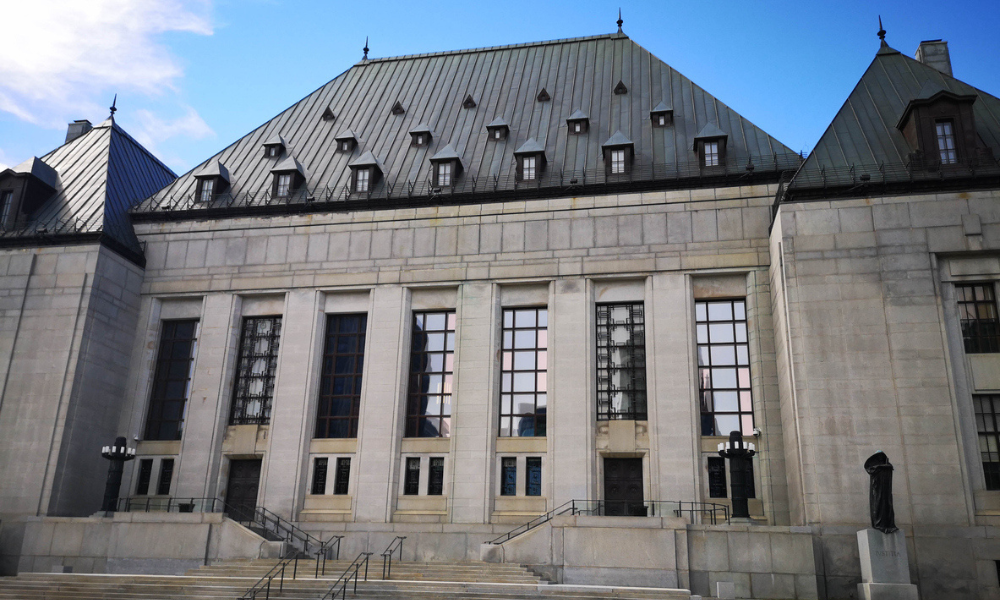'This is an end to the status quo of free mining in BC,' says environmental lawyer

A comprehensive, 148-page judgment from the Supreme Court of British Columbia has set a clock in motion: the province now has 18 months to redesign and implement new rules to govern mineral exploration activities.
The petitioners in Gitxaala v. British Columbia (Chief Gold Commissioner), 2023 BCSC 1680, are two First Nations, the Gitxaała Nation and the Ehattesaht First Nation. Both had experienced free miners entering their asserted territories to explore for minerals. In both cases, the free miners did so without consulting the First Nations or gaining their consent. Among their claims, the Gitxaała Nation and the Ehattesaht First Nation argued that granting mineral claims to miners under the provincial Mineral Tenure Act (MTA) breaches Aboriginal rights under s. 35, schedule B of the Constitution and that the MTA was an infringement of their rights under the Declaration on the Rights of Indigenous Peoples Act (DRIPA) and the United Nations Declaration on the Rights of Indigenous Peoples (UNDRIP). The First Nations also sought to quash several recently granted mineral claims.
In rendering his decision, Justice Alan Ross seems to have given the petitioners and the respondents some of what they wanted.
“Although there are other aspects of the decision, that are more concerning, I think the main takeaway was that this is an end to the status quo of free mining in BC, and BC will put in place a new regime that’s going to respect Indigenous decision making. That’s an important thing worth celebrating,” says Gavin Smith, West Coast Environmental Law staff counsel. Smith served as co-counsel for the Gitxaała Nation.
“We haven’t heard from the province yet, but everyone else seems to be reasonably happy with this decision,” said Kevin O’Callaghan, partner and leader of the Indigenous law practice at Fasken Martineau DuMoulin, who acted as counsel for three mining industry attendees, the Association of Mineral Exploration, the Prospectors and Developers Association of Canada, and the Mining Association of BC. “I don't see anyone talking about appealing this case.”
The essence of the judgment comes down to several points, but some of the main ones are
- A duty to consult is triggered by the current system of issuing mineral claims because issuing a claim causes adverse cultural and spiritual impacts to the petitioners; the petitioners have the right to receive financial benefit from minerals within their asserted territories.
- A duty to consult flows from s. 35 of the Constitution and the application of the Haida Test.
- Under the MTA, the chief gold commissioner (CGC) can create a structure for consultation with First Nations. Also, that the MTA is constitutionally valid
- UNDRIP has not been implemented into BC law
It is with the following words that Justice Ross, however, is setting the stage for the future of mining in the province.
“I find that the proper remedy in these cases is a declaration that the province owes a duty to consult. I suspend the implementation of that declaration for a period of 18 months to allow the CGC or the executive branch to consult and design a regime that allows for consultation (or, if necessary, for the province to amend legislation). It follows that I am not granting the injunctive relief or the quashing relief sought by the petitioners.”
O’Callaghan said that overall – with an ever-shrinking number of exceptions – the industry recognizes and respects Indigenous rights and looks forward to developing a system that includes consultation. He also said the ruling, and especially the 18-month consultation window, means that “people can continue to explore and invest money in exploration in the interim… with the confidence that they can get the mineral tenure that they need to be the basis of a mineral industry in British Columbia.”
He added that although it took longer than 18 months for the Yukon to develop a similar consultation process, it might be feasible for BC to accomplish the feat in that timeline only because “this conversation has been ongoing for four years now, so it’s not like they’re starting from zero.”
The system for issuing a claim is pretty simple. An online system allows a prospector to virtually stake a claim by selecting blocks of land on a map and paying a fee. In redesigning that system to include a consultation process between Indigenous groups and governments who assert land claims over the territory the prospector wishes to explore, the government must consider UNDRIP and DRIPA, says Smith.
“According to the Declaration Act, BC needs to be undertaking law reform in a manner that upholds all of its rights. That is a necessary component of the work that is going to flow from this decision. Of course, free, prior and informed consent is one of the standards that is set out in the UN declaration, and that is going to need to be applied as part of this redesign,” he says.
While the court recognized that unwanted mining activities caused spiritual and cultural harm, it didn’t find that any damage was caused to a First Nation’s legal regime when the management of the lands fell under the Crown’s responsibility, and the Crown made itself responsible for issuing exploration permits.
“I think, particularly in a world of recognition of UNDRIP, as a society, we’re needing to move towards broader recognition of Indigenous laws and legal order as law, as their own system of exercising governance. I think there are concerning aspects of dismissing potential impacts to laws and governance by not taking the seriousness of Indigenous law to heart in that regard,” said Smith.
Although Smith couldn’t comment on what his clients expect from the upcoming consultation process or how they envision the new system working, he does think that First Nations, in general, will want the ability to designate certain areas as off-limits to any exploration or mining activities that disturb the land. (Placer mining, such as panning for ore in river deposits, was not considered part of this case.)
Even though this decision applies only to British Columbia, it has the potential to influence other parts of the country. According to O’Callaghan, the ruling hinges on Indigenous people’s claim to title of the land in question. “In provinces that have treaties where there is no Aboriginal title claim, then that same [duty to consult] trigger won’t occur.” He mentioned an application for leave in Quebec that is dealing with similar issues as the Gitxaala decision.
Justice Ross recognized the historical significance of this decision, writing, “I pause here to note that this is, to my knowledge, the first judicial consideration of the legal effect of DRIPA… I anticipate that this will be the first of many opportunities for the courts to consider DRIPA and UNDRIP. I expect that both the legislation and the jurisprudence will develop over time.”
He also acknowledged that miners and Indigenous people must find a way to co-exist.
“In 1997, in the concluding sentences of his judgment in Delgamuukw, Chief Justice Lamer noted that s. 35 of the Constitution provides a basis upon which subsequent negotiations can take place. He reflected upon the importance of resolving these differences through negotiation because, as he noted, ‘Let’s face it, we are all here to stay.’
“That statement applies equally to the circumstances at issue in these petitions. The province, First Nations, and the mineral exploration industry will be here. The goal is to develop a mineral tenure system that recognizes the rights of B.C.’s Indigenous people. My hope is that that goal can be achieved in the 18 months I have set aside for that purpose.”










